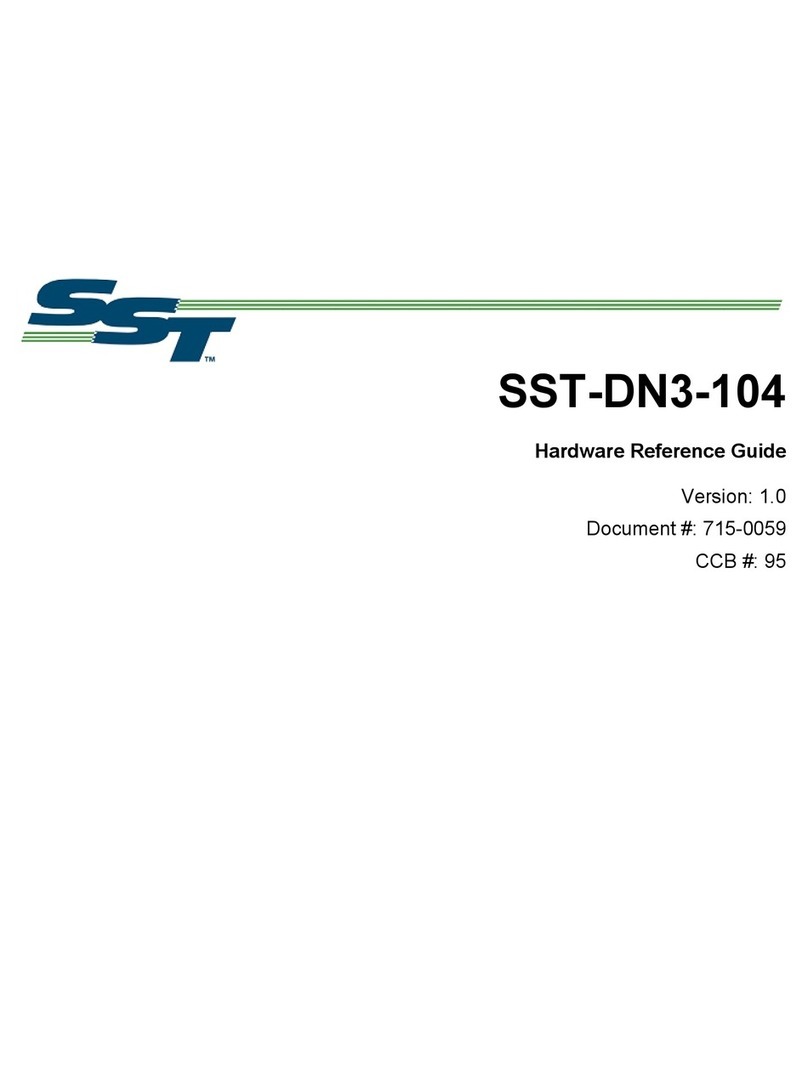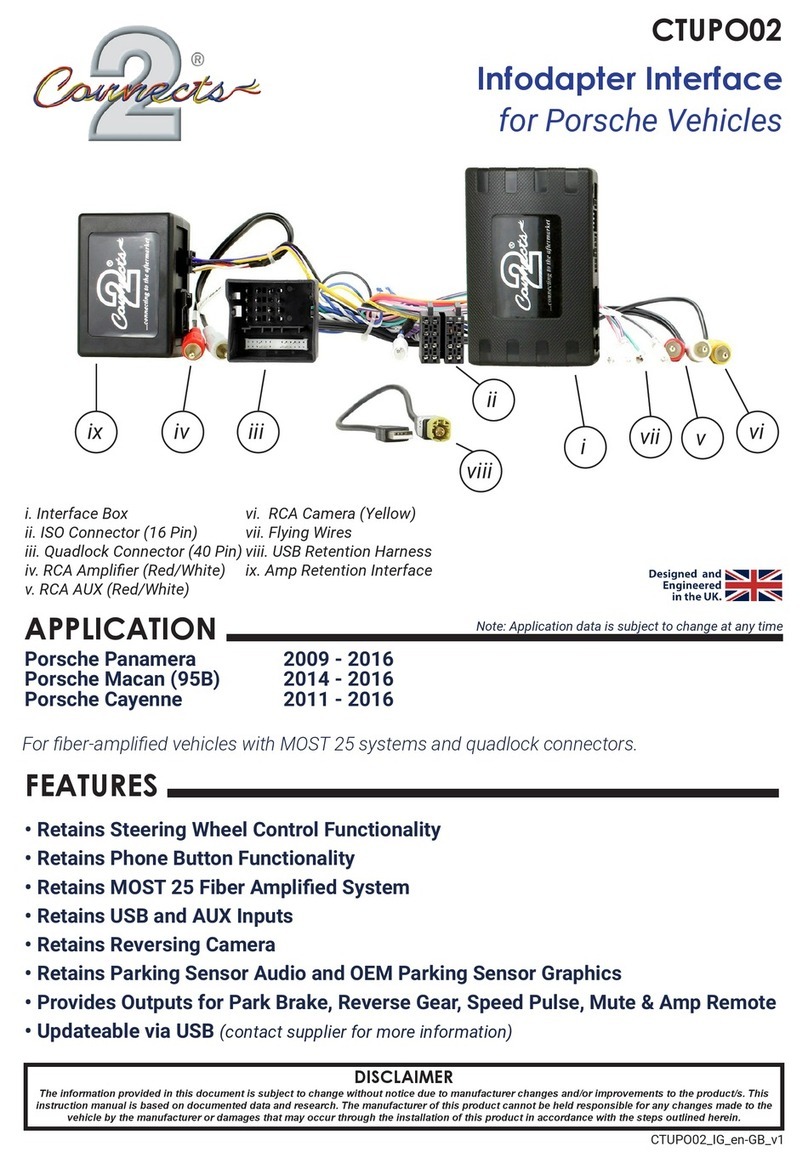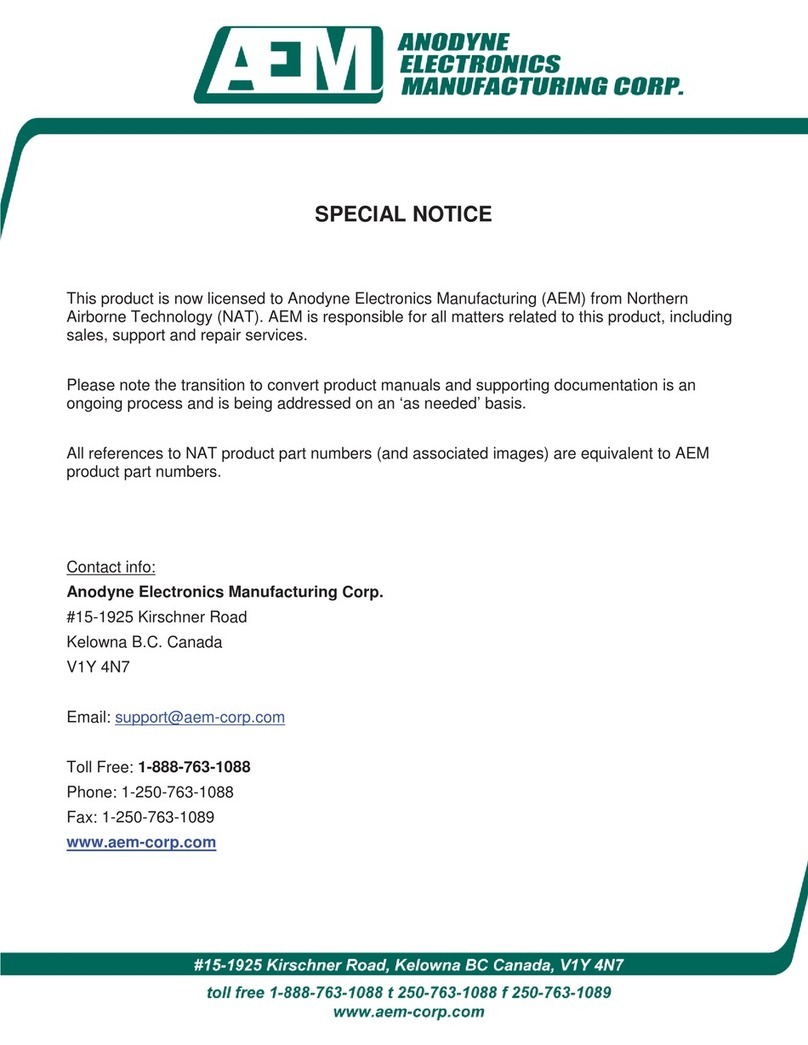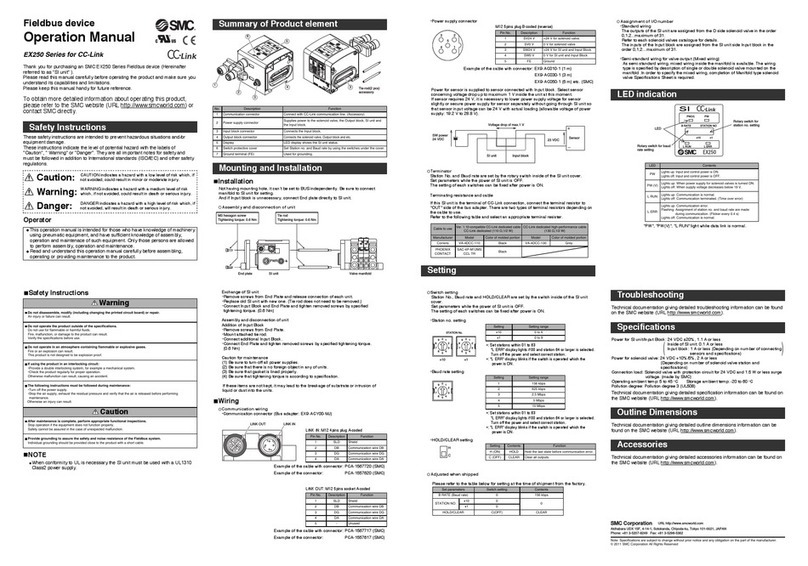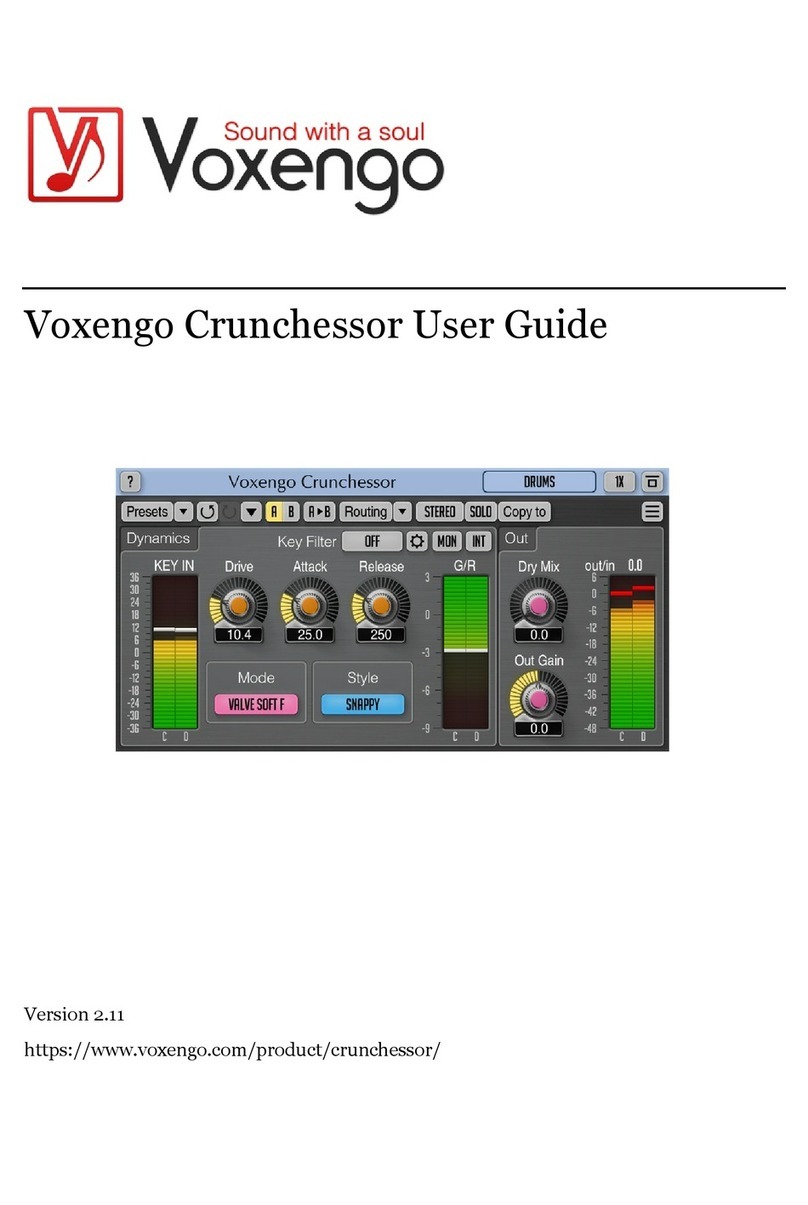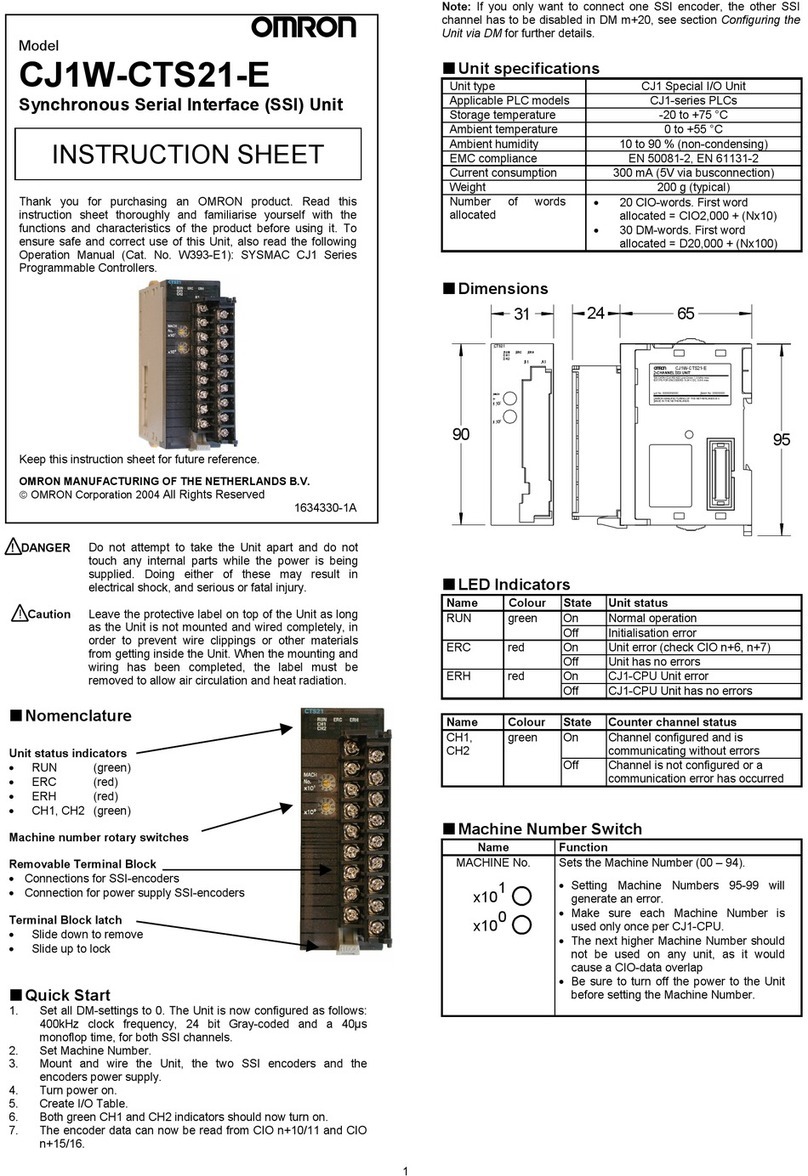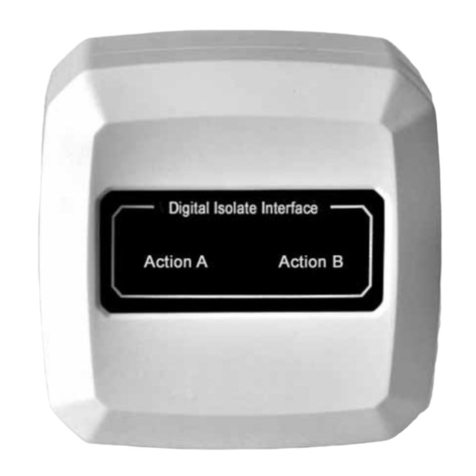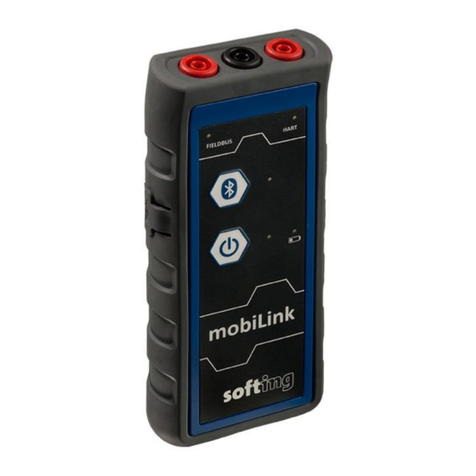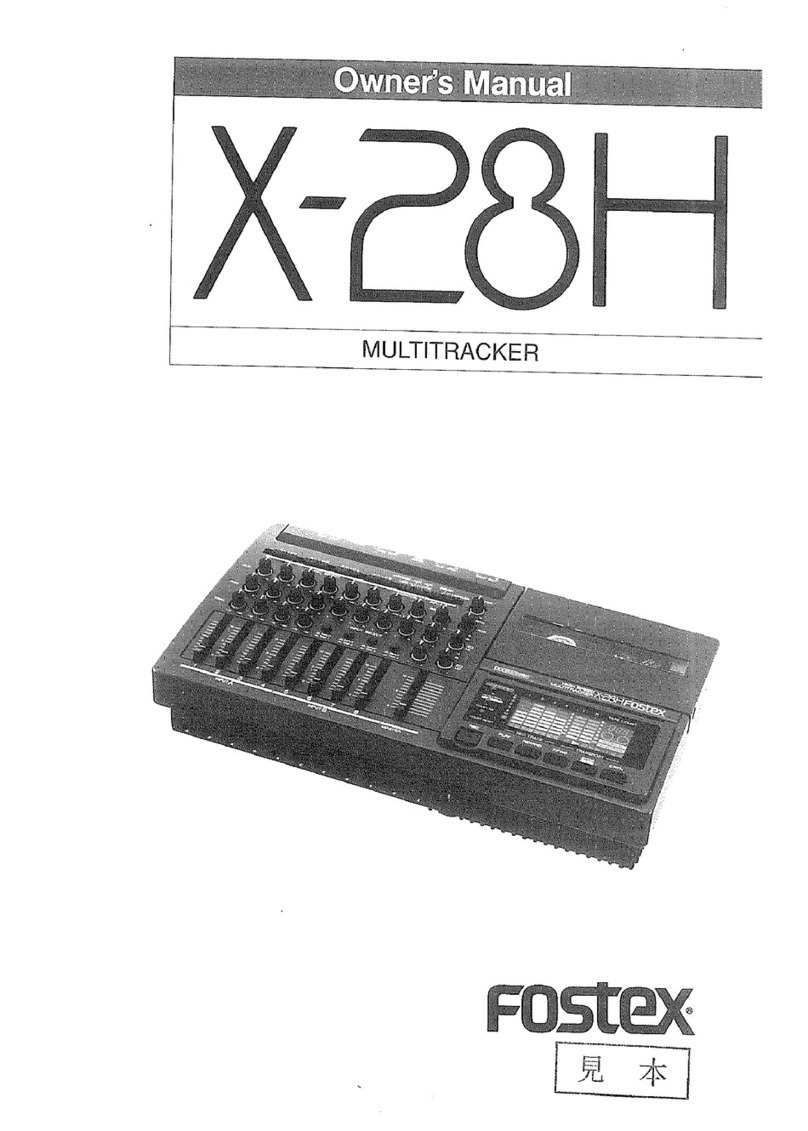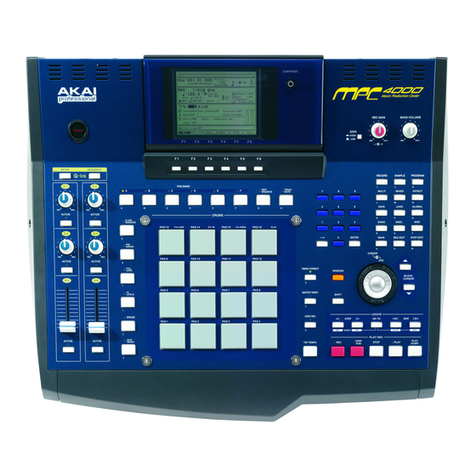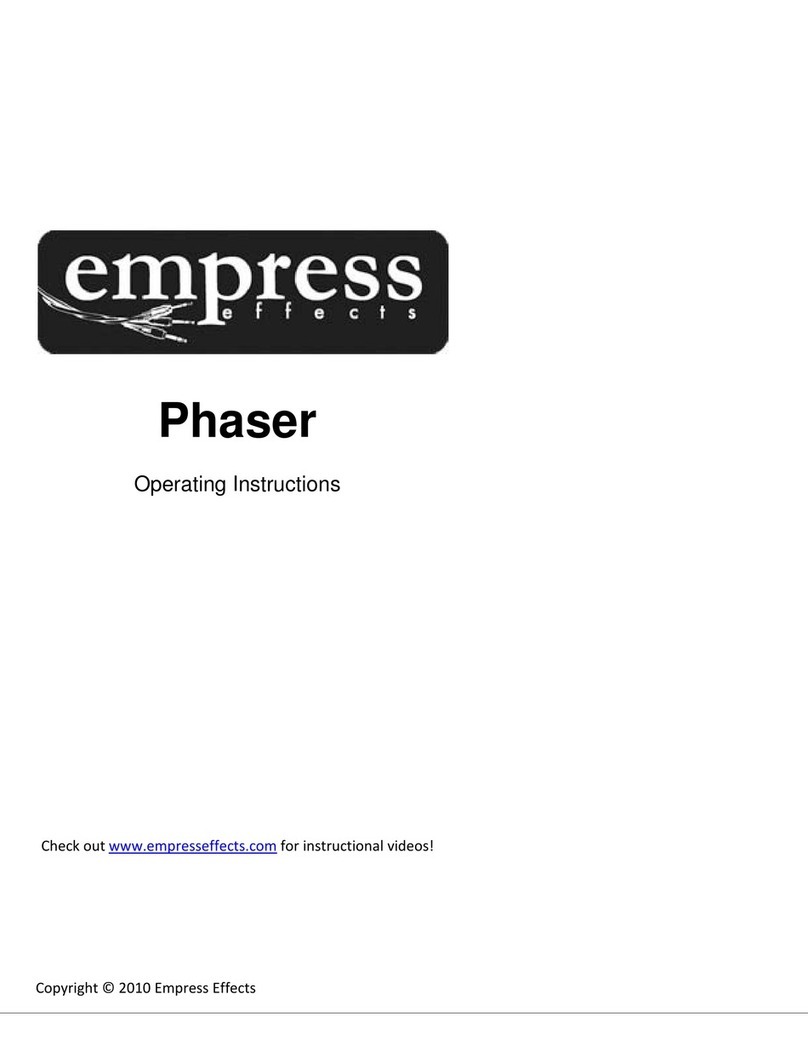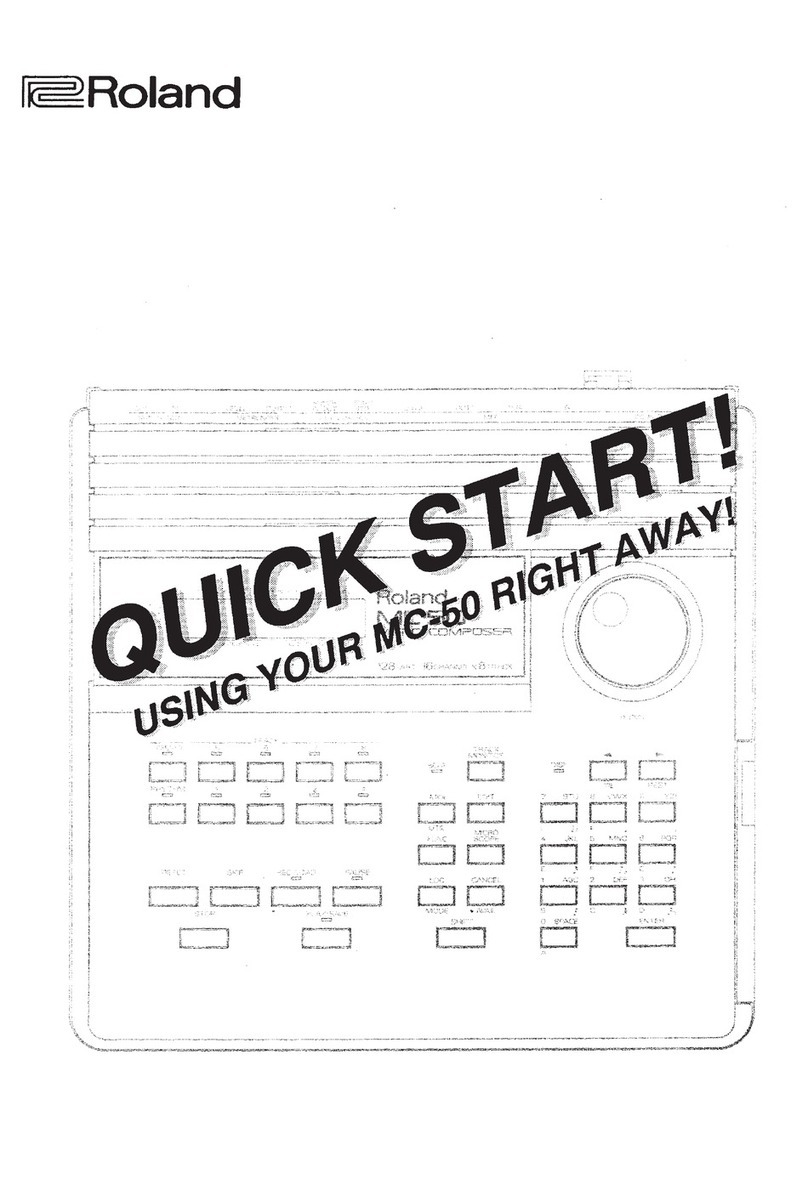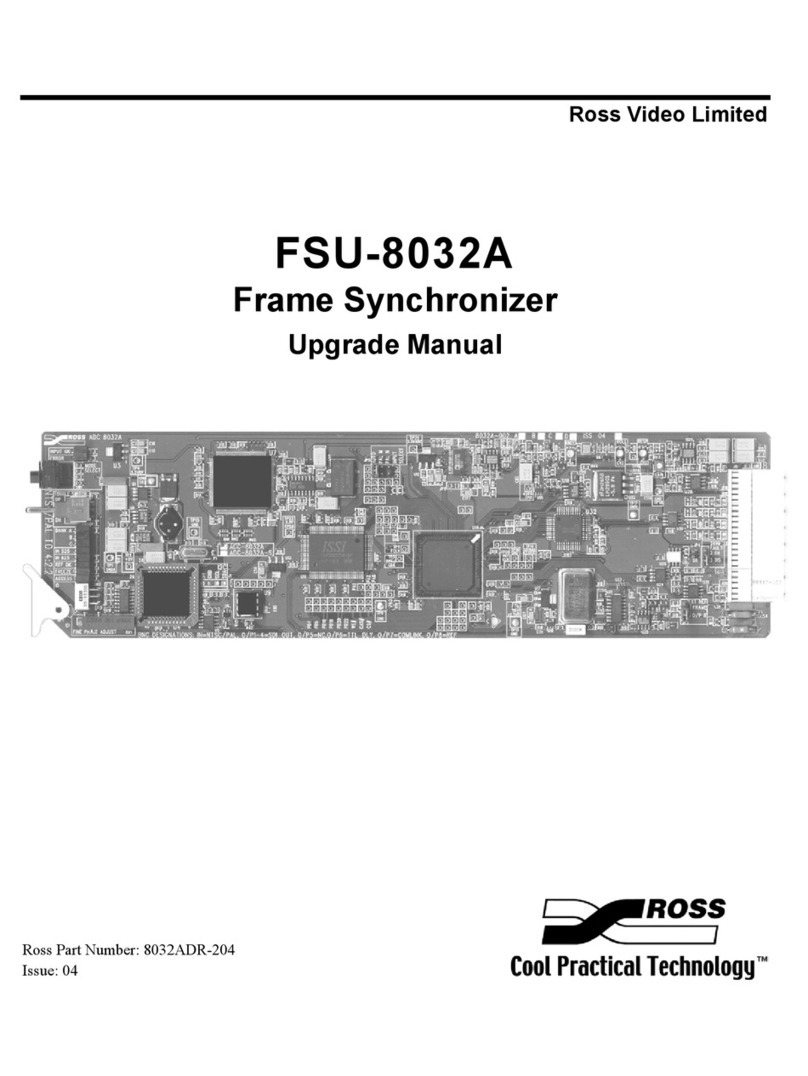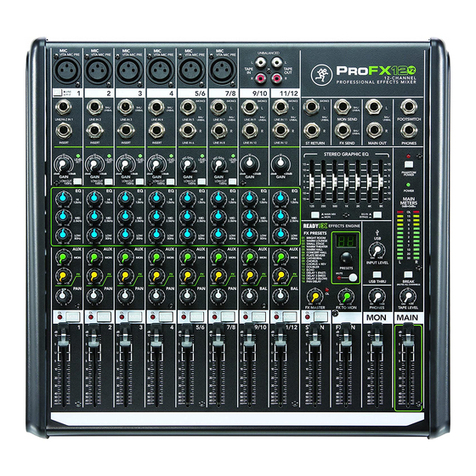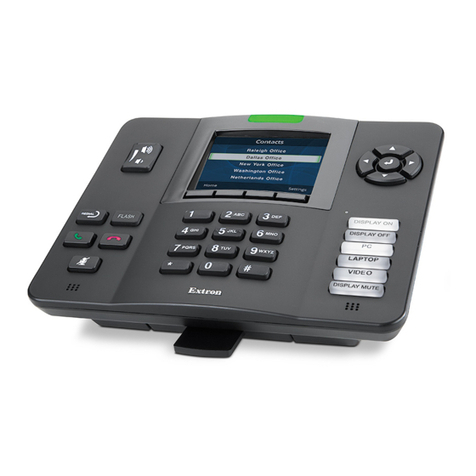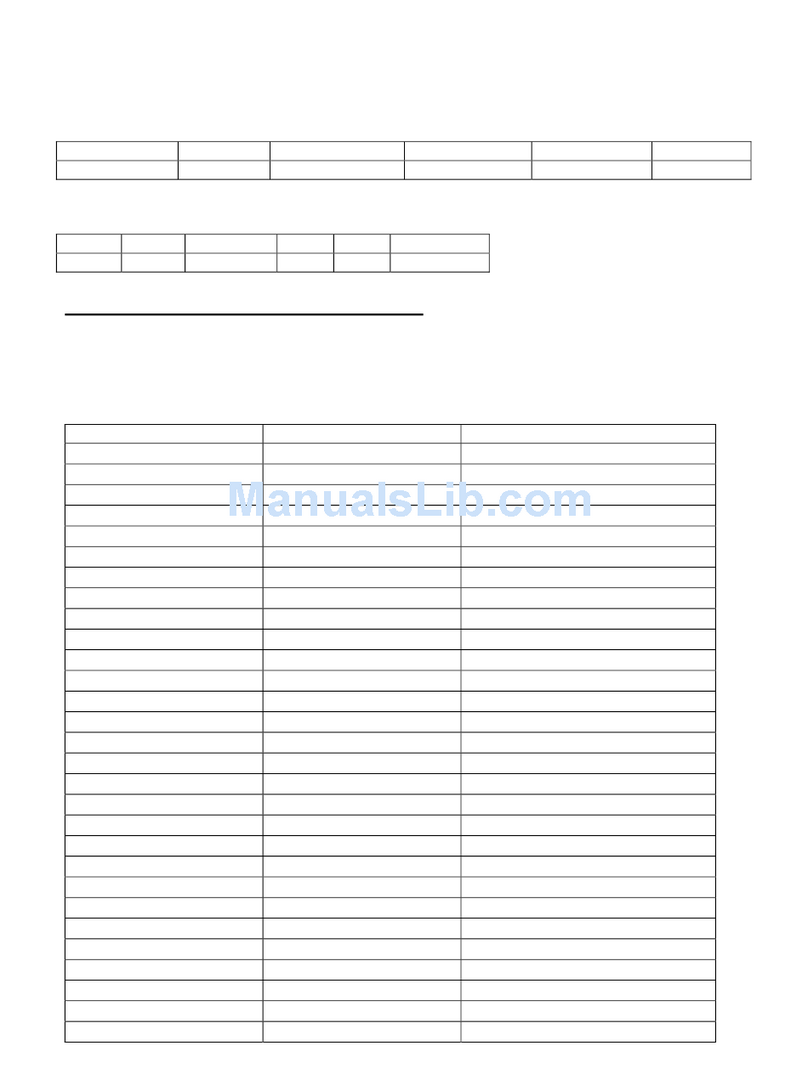SST O2I-Flex User manual

© 2010 SST Sensing Ltd 1 www.sstsensing.com
DS0074 Rev 7
FEATURES
Provides the electronics necessary to power
and control SST’s range of dynamic oxygen
sensors
High accuracy linear output
Selectable output measurement ranges:
Standard ranges of 0-25% O2 and
0-100% O2or fully adjustable via RS232 when
configured in 0-100% O2mode
Multiple outputs:
4-20mA, 0-10VDC and RS232 comms
interface
Externally triggered automatic or manual
calibration. Calibration can also be initiated via
an on-board push button switch
Can be calibrated in normal air (20.7% O2) or in
any other known O2 concentration
Cycling 3.3VDC logic output allows direct
monitoring of the O2 sensor pump cycle for
diagnostic purposes
Selectable output filtering allows adaptive, fast
and dynamic or slow and stable output
response
Power and Sensor Operating LEDs
Removable polarised screw terminals for easy
wiring
SPECIFICATIONS
Maximum ratings
Supply voltage 24VDC ± 10%
Current consumption 600mA max
@ 24VDC
4-20mA Load 100-600Ω
Temperature limits
Storage -10 to 70C
Operating -10 to 70C
O2I-Flex
APPLICATIONS
Combustion control including oil, gas and
biomass boiler applications
Composting
Laboratory & building air quality monitoring
including confined space personnel safety
Industrial process control i.e. gas mixing for
welding and steel making
Oxygen generation systems
Medical
Scientific including respiratory studies of a
community or an organism, plants and
animals
Food and beverage packaging
Applications where low oxygen is key
including fermentation, rust and corrosion
prevention, inerting and purging
O2I-Flex Oxygen Interface

© 2010 SST Sensing Ltd 2 www.sstsensing.com
DS0074 Rev 7
DESCRIPTION
The O2I-FLEX Interface provides all necessary
electronics to power and control SST Sensing’s range of
dynamic Oxygen Sensors.
The O2I-FLEX Interface can be user configured to output
measuring ranges of 0-25% O2 and 0-100% O2 . The
entire measurement range is linear in both cases. Factory
default is 0-25% O2. When configured for 0-100% O2 the
user can also customise the analogue output ranges to
suit their application.
The interface outputs the measured values
simultaneously via 4 output channels, 4-20mA, 0-10VDC
and RS232 (Rx and Tx), all outputs are referenced to the
system GND.
A digital 3.3VDC logic output cycles at the same
frequency as the electrochemical pumping action of the
oxygen sensing cell during normal operation, thus
providing a real time sensor health check, if the output
ceases to cycle the sensor has entered a start-up or error
state. This provides fault proof operation. The digital
output is also used during the calibration process to
indicate the interface status.
A green on-board LED mirrors the CYCLE output and can
be used to visually determine the sensor status or during
the calibration process. A red LED indicates the unit has
power applied.
SST’s range of oxygen sensors do not directly measure
the oxygen concentration but instead measure the partial
pressure of oxygen within the measurement gas. In order
to output an oxygen concentration (%) the O2I-FLEX
must be calibrated, or more specifically, re-referenced in
a known gas concentration, typically normal air.
Calibration, or re-referencing, is achieved by connecting
the calibration input to GND or by pressing the on-board
calibration switch and monitoring the status of the digital
cycle output or by visually monitoring the on-board green
LED. During the calibration process the output will either
automatically calibrate to a fixed reference or can be
manually calibrated to any output by way of a PCB
mounted potentiometer. The fixed reference is factory set
to 20.7% O2for calibration in normal air though this value
may be altered via the RS232 interface for calibration
with a reference gas of any known oxygen concentration.
Calibration is stored on power loss.
The auto or manual calibrate function is user
configurable. Regular calibration removes the effects of
application and atmospheric pressure changes and also
eliminates any sensor drift that may occur during the first
few hundred hours of operation.
For more detailed information on the operation
of SST Sensing Oxygen Sensors please refer to
the following application note via our website:
AN0043 Operation Principle and Construction of
Zirconium Dioxide Oxygen Sensor.
O2I-Flex Oxygen Interface

© 2010 SST Sensing Ltd 3 www.sstsensing.com
DS0074 Rev 7
PERFORMANCE CHARACTERISTICS
Characteristics Min. Typ. Max. Unit
Output inactive start up delay (heater warm up) 60 s
Initial warm up time (till stable output) 5 10 min
Measuring ranges
25% Configuration
100% Configuration
0.1 (1)
0.1 (1)
25
100
% O2
Accuracy After Calibration (2) (3) 1 % O2
Repeatability After Calibration (2) 0.5 % O2
0-10 VDC Output Resolution 0.01 V
4-20mA Output Resolution 0.01 mA
RS232 Output Resolution 0.01 % O2
Reaction time (adaptive output filtering in normal air) 1 s
Notes:
(1) Prolonged operation below 0.1% O2can damage the sensing element.
(2) Assuming barometric pressure remains constant.
(3) As the O2 sensor measures the partial pressure of oxygen (PPO2) within the measurement gas deviations in the
Barometric Pressure (BP) from that present during calibration will cause readout errors proportional to the
change. For example if the sensor was reading 21% O2at 1013.25mbar and the BP increased by 1% the sensor
readout would also increase by 1% to 21.21% O2.
OXYGEN SENSOR HEATER ADJUSTMENT
The Oxygen Sensor heater must be adjusted to the correct heater voltage depending on the variant of sensor.
For a sensor with a full porous cap the heater voltage should be adjusted to 4.35VDC measured as close as possible to
the sensor heater connections.
For a sensor with a porous lid the heater voltage should be adjusted to 4.00VDC measured as close as possible to the
sensor heater connections.
The heater voltage is set by adjusting the HEATER VOLTAGE ADJUST pot, highlighted below and on page 4.
O2I-Flex Oxygen Interface

© 2010 SST Sensing Ltd 4 www.sstsensing.com
DS0074 Rev 7
OUTLINE DRAWING AND MOUNTING INFORMATION
60mm
60mm 67mm
67mm
4 x M4 Mounting holes on industry standard 60x60mm pitch
PCB LAYOUT
O2I-Flex Oxygen Interface

© 2010 SST Sensing Ltd 5 www.sstsensing.com
DS0074 Rev 7
ELECTRICAL CONNECTIONS
Output pins 8, 9, 12 & 13 are all referenced to the supply GND (pin 7). Due to high current flow in the supply GND, when
monitoring the 0-10VDC output (pin 9) it is recommended that a separate GND wire for the measurement system is taken
from PIN 7. This removes errors due to voltage drops in the power supply connections.
Every SST oxygen sensor has two heater connections which should be connected to pins 1 & 2 of the O2I-Flex, the
heater coil has no polarity. However when connecting to a sensor where the sensor housing is one of the heater
connections, pin 1 of the O2I-Flex should be connected to the housing.
SYSYEM BLOCK DIAGRAM
PIN Description
1 Sensor Heater GND (Yellow, H)
2 Sensor Heater + (Yellow, H)
3Sensor Sense (Blue, S)
4 Sensor Common (Black, C)
5 Sensor Pump (Red, P)
6 24VDC ± 10%
7 GND
8 4-20mA Output
9 0-10VDC Output
10 Calibrate
11 Cycle
12 RS232 Tx
13 RS232 Rx
6 7 8 9 10 11 12 13
1 2 3 4 5
O2I-Flex Oxygen Interface

© 2010 SST Sensing Ltd 6 www.sstsensing.com
DS0074 Rev 7
RS232 COMMUNICATION SETTINGS
When connecting the O2I-FLEX via the RS232 connections ensure Tx goes to Rx of the PC and Rx goes to Tx of the
PC.
The O2I-Flex communicates via standard COM port settings that are default on most PCs and many other RS232
compatible devices. If however communication problems are occurring use the settings below to configure the PC or
device COM Port.
O2I-Flex Oxygen Interface

© 2010 SST Sensing Ltd 7 www.sstsensing.com
DS0074 Rev 7
CONFIGURATION
The O2I-FLEX may be reconfigured at any time by
adjusting the position of the header pin jumper links on the
interface PCB.
WARNING: Prior to re-configuration the O2I-FLEX MUST
be powered down. The jumper links MUST also be
repositioned correctly and in the correct orientation.
Power down the O2I-FLEX
Adjust the position of the jumper links to the desired
configuration. The diagram below shows the
Interface PCB and the correct orientation of the
Jumper Links. Thin nosed pliers should be used to
remove and replace the Jumper Links. Ensure the
Jumper Links are correctly seated before reapplying
the power
NOTE: Each Jumper Link must be placed in one of the two
positions, either Manual (MANUAL CAL) or Automatic
(AUTO CAL) Calibration and 100% or 25% Measuring
Range.
RS232 OPERATION
With the O2I-FLEX RS232 outputs connected to a PC or
any other RS232 compatible device the user has the
ability to access two modes of operation, continuous data
streaming and the menu screens. Recommended
programs for communicating via PC serial RS232 are
Hyperterminal (windows default), Teraterminal and PuTTY.
A freeware PuTTY link can be found below;
http://the.earth.li/~sgtatham/putty/latest/x86/putty.exe
Continuous Data Streaming
On power up, after the initial 60s heater delay, the O2I-
FLEX will automatically begin outputting the measured O2
concentration and sensor Td as both an averaged and raw
value.
The averaged values give a stable output with the amount
of averaging user variable whilst the raw un-averaged
values allow the user to detect sudden oxygen changes.
The averaged value is the measurement output on both
the 4-20mA and 0-10VDC outputs. The sensor Td value is
the measure of the partial pressure of oxygen in the
measurement gas. The O2concentration (%) is the Td
value scaled by the stored calibration value.
To stop or restart the data streaming ‘s’ (lower or upper
case) should be sent to the unit. Data streaming
automatically ceases during calibration.
Menu Screens
If the O2I-FLEX receives an enter character from the
connected PC or device it automatically enters the menu
password screen and stops outputting O2% and Td
values. After the correct password is entered followed by
the enter character, the menu screens are accessed. The
menu screens are primarily for diagnostics and information
although there are user configurable options that may be
changed. These are the automatic O2calibration %, the
amount of output filtering (averaging) and the analogue
output ranges . All three processes are further described
on Page 7.
The menu access password may also be changed by the
user.
Changing the Menu Access Password
The password is factory set to ‘default’. This however may
be changed to a user specific password.
Connect the O2I-FLEX via the RS232 interface to
the PC.
Press Enter then enter your current security
password. Press Enter to access the menu screen.
In the Configuration menu (menu 2) enter ‘3’ to
access the password menu screen.
Enter the new password then press Enter to save.
The new password is now stored in memory and is
retained on power loss.
.
Pressing ESC returns the screen to the previous menu.
O2I-Flex Oxygen Interface

© 2010 SST Sensing Ltd 8 www.sstsensing.com
DS0074 Rev 7
RS232 USER CONFIGURABLE OPTIONS
Changing the Automatic Calibration Value
The system is factory set to automatically calibrate to
20.7% O2to allow simple calibration in normal air. The
auto calibration value is factory set to 20.7% to take into
account average humidity in the atmosphere. If a
calibration with a gas of a different known O2
concentration is required the factory set value may be
changed via the RS232 interface.
Connect the O2I-FLEX via the RS232 interface to
the PC.
Press Enter then enter your security password.
Press Enter to access the menu screen.
In the Configuration menu (menu 2) enter the auto
calibration value screen (option 1 - Enter
Auto Calib).
The number entered should be the oxygen
concentration (%) of the calibration gas to 2 decimal
places. Press Enter to save.
The new Automatic Calibration value is now stored
in memory. This value is retained on power loss.
If calibration is required with a different gas of known O2
concentration and access to the RS232 menus with a PC
is not available in order to change the calibration
percentage, a manual calibration must be performed.
Variable Output Filtering (Td Averaging)
The O2I-FLEX is factory default to use adaptive output
filtering to give an optimum balance between output
stability and response to oxygen changes. However this
balance may be altered by the customer to suit the needs
of the application.
Connect the O2I-FLEX via the RS232 interface to
the PC.
Press Enter then enter your security password.
Press Enter to access the menu screen.
In the Configuration menu (menu 2) enter the Td
average screen (option 2 - Enter Td Averaging).
The number entered should be between 0 and 200.
0 for adaptive filtering (recommended), 1 for very
fast and dynamic output response but relatively
unstable to 200 for an extremely stable output but
very slow response to oxygen changes.
Press Enter to save.
The new averaging value is now stored in memory.
This value is retained on power loss.
Adjusting the Minimum and Maximum Ranges of the
Analogue Outputs (4-20mA and 0-10VDC)
The O2I-FLEX is factory default to output a range of
0-25% O2via its two analogue outputs. This range can be
expanded to 0-100% O2as described on Page 6. When
the unit is reconfigured to output 0-100% O2the user also
has the option to fully customise the output ranges via
RS232. This is extremely useful in applications where the
O2variation is within a narrow band as it allows the
analogue outputs to be tailored to this limited range.
Ensure the O2I-Flex is configured for 0-100%
operation, see Page 6.
Connect the O2I-FLEX via the RS232 interface to
the PC.
Press Enter then enter your security password.
Press Enter to access the menu screen.
In the Configuration menu (menu 2) enter the
maximum range screen (option 3 - Enter O2 Max
Range).
The number entered should be between 1.00 and
100.00 to represent the maximum output range. The
number must also be greater than the saved
minimum range.
Press Enter to save the ESC to return to the
configuration menu.
Enter the minimum range screen (option 4 - Enter
O2 Min Range).
The number entered should be between 0.00 and
99.00 to represent the minimum output range. The
number must also be less than the saved maximum
range.
Press enter to save.
The new ranges are now stored in memory and are
retained on power loss.
An example of changing the min and max output ranges
would be in an normal air atmosphere where the O2range
is between 20-21%. The user could set the minimum
output range to 19% and the maximum output range to
22% and the outputs would vary linearly in between. The
min and max ranges lock out the outputs at the set limits
so 19% O2or lower would set the analogue outputs to
0VDC/4mA and 22% O2or higher would set the analogue
outputs to 10VDC/20mA.
The min and max range adjustment does not apply to the
RS232 output and is overruled if the unit is reconfigured
for 0-25% operation.
O2I-Flex Oxygen Interface

© 2010 SST Sensing Ltd 9 www.sstsensing.com
DS0074 Rev 7
ERROR CONDITIONS
If the oxygen sensor is not connected up correctly or is
damaged the O2I-Flex will highlight this by blinking the
CYCLE output (pin 11) and green LED in a 3 short blinks 1
long blink pattern or continuously OFF. An error code is
also displayed on the RS232 output and the analogue
outputs will go to 4mA and 0V.
If an error condition occurs the unit should be powered
down and all wiring checked before reapplying the power.
If the error condition remains the O2 sensor is damaged
and should be replaced.
O2I-Flex Oxygen Interface
CALIBRATION PROCEDURES
Automatic Calibration
Ensure the O2I-FLEX is configured for automatic
calibration. See CONFIGURATION on Page 6.
Place the sensor probe in the calibration gas,
typically normal air.
Allow the output to stabilise for at least 5 mins. 10
mins if powering from cold.
Apply GND to the CALIBRATE input (PIN 10) or
press the on-board calibration switch for a
minimum 12s. During the 12s the CYCLE output
(PIN 11) and the green LED will go high/on, blink
rapidly, go high/on, go low/off then return to cycling
normally to indicate normal operation has resumed.
At this point remove GND from PIN 10 or release
the calibration switch.
The output will now track to the correct value for the
calibration gas.
Calibration is complete. Calibration values are
retained on power loss.
Manual Calibration
Ensure the O2I-FLEX is configured for manual
calibration. See CONFIGURATION on Page 6.
Place the sensor probe in the calibration gas,
typically normal air.
Allow the output to stabilise for at least 5 mins. 10
mins if powering from cold.
Apply GND to the CALIBRATE input (PIN 10) or
press the on-board calibration switch for a
minimum 5s or until the CYCLE output and green
LED blink at a steady 1Hz. Remove GND from PIN
10 or release the calibration switch. Manual
Calibration is now initialised.
Adjust the MANUAL CAL POT until the output
equals the correct value of the calibration gas
concentration.
Re-apply GND to PIN 10 or press the calibration
switch for a minimum 5s. During the 5s the CYCLE
output/LED will blink rapidly, go high/on, go low/off
then return to cycling normally to indicate normal
operation has resumed. At this point remove GND
from PIN 10 or release the calibration switch.
The output will now track to the correct value for the
calibration gas.
Calibration is complete. Calibration values are
retained on power loss.
SEE PAGE 4 FOR THE LOCATION OF THE
CALIBRATION SWITCH, SENSOR/POWER LEDs AND
THE MANUAL CAL POT.

© 2010 SST Sensing Ltd 10
DS0074 Rev 7
O2I-Flex Oxygen Interface
SENSOR OPERATING TIPS
To get the best performance from the O2I-Flex interface it is important that the attached oxygen sensor is installed and
maintained in the correct manner. The following two pages outline some useful sensor operating tips and a list of gases
and materials that must be avoided to ensure a long sensor life.
Operating the Sensor in Aggressive Humid Environments:
When operating the sensor in warm, humid environments it is important the sensor remains at a higher temperature
than it’s surroundings, especially if there are corrosive components in the measurement gas. During operation this is not
a problem due the 700°C generated by the heater, but this means when the sensor or application is being powered
down the sensor heater must be the last thing to be turned off after the temperature of the surroundings have suitably
cooled. Ideally the sensor should be left powered at all times in very humid environments.
Failure to adhere to the above will result in condensation forming on the heater and sensing cell as these will be the first
components to cool due to their connections to the outside world. When the sensor is re-powered the condensation will
evaporate, leaving behind corrosive salts which very quickly destroy the heater and cell as illustrated below. Note how
the sensor’s external metalwork looks completely normal.
Protecting from Water Droplets:
In environments where falling water droplets are likely the sensor should be protected from water falling directly onto the
very hot sensor cap as this can cause massive temperature shocks to the cell and heater. Popular methods include a
hood over the sensor cap or for the sensor to be mounted in a larger diameter cylinder.
At a very minimum the sensor cap should be angled downwards in the application as this will deflect any falling moisture
and prevent the sensor cap from filling with water.
Using the Sensor With Silicones:
SST Sensing’s oxygen sensors, like all other Zirconium Dioxide sensors, are damaged by the presence of silicone in the
measurement gas. Vapours (organic silicone compounds) of RTV rubbers and sealants are the main culprits and are
widely used in many applications. These materials which are often applied as a liquid or gel still outgas silicone vapours
into the surrounding atmosphere even after they have cured. When these vapours reach the sensor the organic part of
the compound will be burned at hot sensor parts, leaving behind a very fine divided Silicon Dioxide (SiO2). This SiO2
completely blocks the pores and active parts of the electrodes.
If silicone cannot be avoided in the application we advise using high quality, high temperature cured materials which do
not outgas when subsequently heated. SST can provide guidance if there is concern about use of silicone within the
application.
When installing the sensor do not use any lubricants or grease which may contain silicone.
In addition to silicones other gases which may interfere will the sensor are listed overleaf.

© 2010 SST Sensing Ltd 11
DS0074 Rev 7
O2I-Flex Oxygen Interface
WARNING
Due to the power requirements of the sensor
heater the PCB becomes HOT during operation.
Personal Injury
DO NOT USE these products as safety or
Emergency Stop devices or in any other application
where failure of the product could result in
personal injury.
Failure to comply with these instructions could
result in death or serious injury.
CAUTION
Do not exceed maximum ratings and ensure sensor is
operated in accordance with all requirements of AN0043
Failure to comply with these instructions may result
in product damage.
It is the customer’s responsibility to ensure that this
product is suitable for use in their application. For
technical assistance or advice, please email us:
SENSOR OPERATING TIPS continued
Cross sensitivity with other gases:
Gases or chemicals that will have an influence on the life of the sensor or on the measuring results are:
1. Combustible Gases
Small amounts of combustible gases will be burned at the hot Pt-electrode surfaces or Al2O3filters of the sensor.
In general combustion will be stoichiometric as long as enough oxygen is available, the sensor will measure the
residual oxygen pressure which leads to a measurement error. The sensor is not recommended for use in
applications where there are large amounts of combustible gases present and an accurate O2measurement is
required.
Investigated gases were:
H2(Hydrogen) up to 2%; stoichiometric combustion
CO (Carbon Monoxide) up to 2%; stoichiometric combustion
CH4(Methane) up to 2.5%; stoichiometric combustion
NH3(Ammonia) up to 1500 ppm; stoichiometric combustion
2. Heavy Metals
Vapours of metals like Zn (Zinc), Cd (Cadmium), Pb (Lead), Bi (Bismuth) will have an effect on the catalytic
properties of the Pt–electrodes. Exposure to these metal vapours must be avoided.
3. Halogen and Sulphur Compounds
Small amounts (< 100ppm) of Halogens and/or Sulphur compounds have no effect on the performance of the
oxygen sensor. Higher amounts of these gases will in time cause readout problems or, especially in condensing
atmospheres, corrosion of sensor parts. These gases often outgas from plastic housings and tubes when hot.
Investigated gases were:
Halogens, F2(Flourine), Cl2(Chlorine)
HCL (Hydrogen Chloride), HF (Hydrogen Fluoride)
SO2(Sulphur Dioxide)
H2S (Hydrogen Sulphide)
Freons
CS2(Carbon Disulfide)
4. Reducing Atmospheres
Long time exposure to reducing atmospheres may in time impair the catalytic effect of the Pt-electrodes and has
to be avoided. Reducing atmospheres are defined as an atmosphere with very little free oxygen and where
combustible gases are present. In this type of atmosphere oxygen is consumed as the combustible gases are
burned.
5. Others
Dust. Fine dust (Carbon parts/soot) might cause clogging of the porous stainless steel filter and might
have an effect on the response of the sensor to oxygen changes.
Heavy shocks or vibrations may alter sensor properties resulting in the need for a recalibration.
Table of contents
Other SST Recording Equipment manuals


